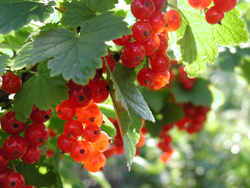Enzyme-aided extraction for bioactive components
Researchers from the MAXFUN consortium treated harvested grapes with different concentrations of ozone gas for periods of one, three and five hours. The result was an increase in the metabolism of phenols, especially stilbenoid biosynthesis, during storage of the grapes. One example of a stilbenoid is resveratrol, concentrations of which were identified after two days of storage. This was found to be similar to the amount induced by treatment with ultraviolet C. Similar amounts of resveratrol accumulated in grapes following treatment with ultraviolet C and ozone. However, treatment with ozone was the most efficient, causing resveratrol polymer to accumulate in grape berries. A sequence in the biosynthesis of stilbenoids was also studied by researchers, beginning with the resveratrol monomer beforeproceeding to resveratrol dehydrodimers. The sequence finally ended with four different resveratrol dehydrotrimers. The MAXFUN scientists also identified two alpha-viniferin isomers in the ozone treated grapes. However, they were found in very low concentrations and were not able to be quantified. The structure of these new trimers was similar to that of dimers already identified in grapes. Treatment with ozone gas resulted in a loss of flavour in white grapes, making them unsuitable as fresh table grapes. These grapes can, however, be used for preparing grape musts enriched with stilbenoids and nutraceutical polyphenol extracts.



